Results 10,281 to 10,290 of 12094
Thread: Anandtech News
-
01-28-20, 12:03 PM #10281
Anandtech: Assassin’s Speed: Eve Technology Reveals 27-Inch QHD Monitors With 240Hz V
Eve Technology is known primarily for its crowd-developed 2-in-1 Eve V notebook introduced a couple of years ago. But this week the company introduced its first crowd-developed displays. The Spectrum monitors designed for gamers also happen use some of the industry’s first QHD (2560x1440) IPS panels that feature a 240 Hz refresh rate.
Eve’s Spectrum lineup of gaming displays includes three 27-inch models. The most basic model has a 2560x1440 resolution, 450 nits maximum brightness, and a 165 Hz refresh rate. The ‘fastest’ 240Hz SKU has a 2560x1440 resolution and 750 nits peak brightness. The most advanced version features a 3840x2160 resolution, 750 nits max brightness, and a 144 Hz refresh rate. All the monitors rely on an 8-bit + AFRC IPS panel from LG, which is equipped with a proprietary backlighting as well as a special polarizer that enables the LCDs to display a 98% of the DCI-P3 color gamut.
All the monitors support VESA’s Adaptive-Sync variable refresh rate technology and are AMD FreeSync Premium Pro as well as NVIDIA G-Sync Compatible certified. Also, the displays support HDR10 and are VESA DisplayHDR 400 or 600 certified, depending on the model.
Connectivity is one of the strong sides of Eve’s Spectrum monitors. All models feature one DisplayPort input and output, one HDMI input, and two USB-C inputs with one supporting a 100 W Power Delivery. In addition, the LCDs feature a triple-port USB 3.1 Gen 2 Type-A hub and a headphone jack.
It is noteworthy that while the Eve Spectrum displays are aimed at gamers, their minimalistic design does not ‘scream’ about their gaming nature. Furthermore, the monitors do not come with a stand; if you aren't bringing your own, then that will cost an additional $99.
Eve plans to start sales of its Spectrum displays with a QHD resolution sometimes in the third quarter. The 165 Hz model will cost $349/€349, while the 240 Hz QHD model will be priced at $489/€489. The most advanced 4K Spectrum monitor will be available in the fourth quarter for $589/€589.The Eve Spectrum Displays Spectrum 165 Hz 1440p Spectrum 240 Hz 1440p Spectrum 144 Hz 4K Panel 27-inch class IPS (a-Si) 27-inch class IPS (oxide) Native Resolution 2560 × 1440 3840×2160 Maximum Refresh Rate 165 Hz 240 Hz 144 Hz Dynamic Refresh Technology VESA Adaptive Sync
(AMD FreeSync Premium Pro &
NVIDIA G-Sync Compatible Certified)Range 48 Hz - 165 Hz 48 Hz - 240 Hz 48 Hz - 144 Hz Brightness 400 cd/m² typical
450 cd/m² peak650 cd/m² typical
750 cd/m² peakContrast 1000:1 Viewing Angles 178°/178° horizontal/vertical Response Time 1 ms GtG HDR HDR10
DisplayHDR 400HDR10
DisplayHDR 600HDR10
DisplayHDR 600Pixel Pitch 0.2334 mm² 0.1156 mm² Pixel Density ~109 PPI ~163 PPI Color Gamut Support 98% DCI-P3
100% sRGBInputs 1×DP 1.4 input/output
1×HDMI 2.0
2×USB-C (100W PD)USB Hub Triple-port USB 3.1 Gen 2 Type-A Audio headphone out Stand Adjustable, sold separately for $99 Warranty ? years MSRP $349/€349 $489/€489 $589/€589
It should be noted, however, that these prices are pre-order prices, and require committing to buying the hardware before it ships. Prospective buyers who want to wait for a review should expect to pay more later on, as Eve has indicated that the prices of the displays will increase by the time they hit the market.
Related Reading:
- Gone in 240 Hz: Lenovo’ Legion Y25-25 ‘Fast IPS’ Monitor w/ FreeSync at CES 2020
- Quick & Deadly: Alienware 25 (AW2521HF) 240 Hz Fast IPS Monitor Revealed
- 280 Hz Fast: ASUS Releases TUF Gaming VG279QM IPS Monitor w/ 280 Hz
- Supersonic: ViewSonic’s Elite XG270 240 Hz IPS Monitor w/ VRR & HDR
- Need for Speed: The LG UltraGear (27GN750) 240 Hz IPS Monitor with G-Sync
Source: Eve Technology
More...
-
-
01-28-20, 05:57 PM #10283
Anandtech: NZXT Unveils Kraken X-3 and Kraken Z-3 Series Closed-Loop CPU Coolers
NZXT has introduced its new Kraken X-3 and Kraken Z-3 closed-loop CPU coolers. The coolers are compatible with all modern platforms and are based on Asetek’s latest pumps, offering a blend between performance and quiet operation. Like all modern hardware for enthusiasts, the look of the coolers can be customized using the company’s proprietary software.
The new NZXT Kraken X-3 series includes 240 mm, 280 mm, and 360 mm radiator models, while the more expensive NZXT Kraken Z-3 family is comprised of a 280 mm and a 360 mm SKUs. All five closed-loop coolers are based on Asetek’s 7th Generation pump, which uses a 800 - 2,800 RPM motor. Paired with the Asetek pump are NZXT’s Aer P120 fans, which offer an operational range from 500 to 2,000 RPM and are rated to generate 21 dBA - 36 dBA of noise. The cooling systems use rubber tubing with a nylon braided sleeve as well as caps with a 360° rotation orientation feature, so that the cap can be installed in any direction.
The more affordable NZXT Kraken X-3 comes with a 10% bigger LED ring (when compared to previous models) with a rotable top featuring the company’s logotype. The more expensive NZXT Kraken Z-3 has a 2.36-inch LCD screen that can display various useful information (or just a picture) in 24-bit color, thus allowing to completely customize the look of the cooler.
As for compatibility, the new all-in-one coolers from NZXT can work with all modern CPUs from AMD and Intel, including those that use mainstream AM4 or LGA1155 form-factors as well as HEDT CPUs featuring LGA2066 and TR4 packages.
NZXT’s latest Kraken X-3 and Kraken Z-3 closed-loop CPU coolers are immediately available in the USA directly from the company and will be launched in other countries next month. The cheapest Kraken X53 carries an MSRP of $129.99, whereas the most expensive Kraken Z73 is priced at $279.99.Specifications of NZXT Kraken X3 & Kraken Z3 Cooling Systems General Specifications Fan (single) Speed (RPM) 500-2,000±300 RPM Airflow (CFM) 18.28 - 73.11 CFM Static Pressure (mm-H2O) 0.18 ~ 2.93 mm-H2O Noise (dBA) 21 - 36 Power 3.84 W MTBF (hrs) ?60,000 @ unknown oC Connector 4-pin PWM connector Pump Speed (RPM) 800 – 2,800±300 RPM Life Expectancy ? @ unknown oC Power 4.8 W Tubing Length 400 mm Compatibility AMD AM4, TR4 Intel LGA 1151, 1150, 1155, 1156, 1366, 2011, 2011-3, 2066 TDP ? W
Related Reading:NZXT Kraken X-3 and Kraken Z-3 Coolers Size MSRP Kraken X53 240 mm $129.99 Kraken X63 280 mm $149.99 Kraken X73 360 mm $179.99 Kraken Z63 280 mm $249.99 Kraken Z73 360 mm $279.99
- NZXT Releases C-Series PSUs: 80Plus Gold and up to 850W, Built By Seasonic
- NZXT Refreshes H Series, New H510 Elite Chassis With RGB
- NZXT Expands Kraken AIO Lineup: Their First 360mm AIO, New Kraken M Series
Source: NZXT
More...
-
01-28-20, 10:03 PM #10284
Anandtech: Quick Notes: Navi Refresh and RDNA2 Both In 2020, According to AMD
As part of today’s FY2019 earnings call, AMD CEO Dr. Lisa Su had a few words to say about AMD’s future GPU plans – an unexpected nugget of information since we weren’t expecting AMD to reveal anything further at this time.
In short, for this year AMD is planning on both Navi product refreshes as well as parts based on the forthcoming RDNA 2 GPU architecture. To quote Lisa Su:
In 2019, we launched our new architecture in GPUs, it's the RDNA architecture, and that was the Navi based products. You should expect that those will be refreshed in 2020 - and we'll have a next generation RDNA architecture that will be part of our 2020 lineup. So we're pretty excited about that, and we'll talk more about that at our financial analyst day. On the data centre GPU side, you should also expect that we'll have some new products in the second half of this year.All told, it looks like AMD is setting themselves up for a Vega-like release process, launching new silicon to replace their oldest existing silicon, and minting new products based on existing and/or modestly revised silicon for other parts of their product stack. This would be very similar to what AMD did in 2017, where the company launched Vega at the high-end, and refreshed the rest of their lineup with the Polaris based Radeon RX 500 series.
But as always, the devil is in the details. And for that, we’ll have to stay tuned for AMD’s financial analyst day in March.
More...
-
01-29-20, 11:32 AM #10285
Anandtech: Cooler Master MasterAir G200P Super Low Profile RGB Cooler: 39.4mm for 95W
Cooler Master has introduced its new CPU cooler for small form-factor PCs. The MasterAir G200P is 39.4 mm tall, and CM claims it features an advanced heatsink, a relatively quiet fan, and addressable RGB LEDs that enable modders to build attractive compact desktops.
The MasterAir G200P measures 95×92×39.4 mm (3.7×3.6×1.6 inch) and features an aluminum base plate with over 50 fins and two C-shaped heat pipes as well as a copper base. The cooler is equipped with a 92-mm PWM fan with RGB lighting that features a rotational speed between 800 and 2,600 RPM ± 10% and can generate up to 35.5 CFM air flow and up to 26 dBA noise.
Cooler Master’s MasterAir G200P is compatible with all modern processor sockets from AMD and Intel, though the manufacturer does not disclose a 'maximum' TDP, but does rate the cooler for use with 95 W CPUs. Typically, low-profile CPU coolers that are around 30 mm tall are rated for CPUs with a 35 W ~ 65 W TDP, but the MasterAir G200P is slightly taller and has heat pipes, so the manufacturer rates it for 95 W processors.
One of the key selling points of the MasterAir G200P is its addressable RGB lighting that can be controlled using software from leading motherboards makers.
Cooler Master’s MasterAir G200P is immediately available from leading retailers like Amazon at an MSRP of $44.99. The device is covered with a two-year limited warranty.The Cooler Master MasterAir G200P Specifications MAP-G2PN-126PC-R1 CPU TDP 95 W Material Copper base, aluminum fins Dimension with Fan 95 mm (W) × 39.4 mm (H) × 92 mm (D) Heat Pipes 2 × C-shaped heat pipes Air Pressure ~ 2.4 mm H2O Air Flow (CFM) 35.5 CFM Speed 800 ~ 6600 ± 10% RPM Noise 6 ~ 28 dBA Type of Bearing ? Life Expectancy 40,000 hours at unknown temperature Weight ? grams Compatibility AMD AM4/FM2+/FM2/FM1/AM3+/AM3/AM2+/AM2 Intel LGA1151/1150/1155/1156
Related Reading
- Cryorig C7 G Is A 47mm Low-Profile Cooler with a Graphene Coating, Rated for 125W
- ID Cooling Unveils IS-30 Low-Profile 30-mm Cooler for 100 Watt CPUs
- SilverStone Launches 33mm Nitrogon NT08-115XP CPU Cooler for Ultra-Thin PCs
- 3-Way Low Profile CPU Cooling Shoot-Out: Reeven, Phanteks, & Noctua
- SilverStone Introduces VT01 Mini-STX Chassis for $35
Source: Cooler Master
More...
-
01-29-20, 03:46 PM #10286
Anandtech: Crucial’s 32 GB UDIMMs and SODIMMs Available: DDR4-2666 & DDR4-3200
In the summer of 2019, Crucial was among the first brands to demonstrate 32 GB unbuffered memory modules, which were based on Micron’s 16 Gb DDR4 chips. Now after a bit of a wait, those 32 GB UDIMMs as well as 32 GB SO-DIMMs have finally hit the retail market.
Crucial’s 32 GB unbuffered DIMMs and SO-DIMMs are rated for DDR4-2666 with CL19 at 1.2 V and DDR4-3200 with CL22 at 1.2 V operation. The modules are not equipped with any heat spreader and since they operate in JEDEC-standard modes, they are compatible with a wide variety of PCs that can support 32 GB UDIMMs in general.
At present, Crucial’s 32 GB UDIMMs and SO-DIMMs are available as 64 GB dual-channel memory kits priced at around $330 at the company’s website. Interestingly, the faster DDR4-3200 kits are only $2 more expensive than the slower DDR4-2666 kits. Meanwhile, Amazon.com expects Crucial’s 64 GB dual-channel DDR4-2666 SO-DIMM kit to arrive on February 3, 2020.
It is unclear why Crucial did not start selling its 32 GB UDIMMs and SO-DIMMs to general public earlier, as there are a number of brands that have been offering competing 32 GB UDIMMs using the same Micron chips for months now. In any case, Crucial’s 32 GB DIMMs are finally available.
Related Reading:
- 32 GB Unbuffered DIMMs Listed from Nine Brands: DDR4-2400 to DDR4-4000
- Crucial 32 GB DDR4 Modules Found in an ASRock System
- CES 2020: Kingston’s HyperX Adds 32 GB UDIMMs & New Fury Speed Bins to Lineup
- Team Group Quietly Launches 32 GB DDR4 Memory Modules
- G.Skill Launches 32 GB DDR4 Modules, 256 GB Kits: Up to DDR4-4000
- Corsair Unveils 32 GB Vengeance LPX DDR4 DIMMs, 64 GB & 128 GB Dual-Channel Kits
- Samsung 32GB DDR4-2666 Non-ECC Memory at Retail: $168
Sources: Crucial
More...
-
01-29-20, 03:46 PM #10287
Anandtech: Matrox Unveils D-Series Graphics Cards with NVIDIA Quadro GPUs
Matrox Graphics is one of the oldest graphics card manufacturers still in business today. It started to make video cards in 1978, several years before ATI, and 15 years before NVIDIA. While the company's own internal GPU development efforts petered early this century, the company has continued on as a specialist card maker, using other vendors' GPUs to make special-purpose multi-monitor solutions. Since 2014 the company has been using AMD’s GPUs for its boards, and earlier this month the company inked a similar agreement with NVIDIA. This week, Matrox launched its first NVIDIA-based graphics cards.
The Matrox D-series family of multi-display graphics cards based on a custom-built NVIDIA Quadro embedded GPU and carries 4 GB of GDDR5 memory as well as four DisplayPort 1.4 (D1480) or four HDMI 2.0 (D1450) outputs. The D1450 supports four monitors, with a maximum resolution of up to 4096x2160@60Hz, whereas the D1480 adapter supports four monitors with resolujtions up to 5120×3200@60Hz. The card consumes 47 W and only uses power supplied to it through the PCIe x16 slot.
For video wall applications used in aerospace, military, pro A/V, digital signage, security, and industries, four of Matrox D-series boards can be combined in a single system via board-to-board framelock cables, driving up to 16 displays using one PC. In addition, the cards can further be augmented with Matrox's QuadHead2Go multi-display controllers to drive up to 64 Full-HD screens from a single PC. It is also possible to pair D-series cards with Matrox Mura IPX capture and IP encode/decode boards for applications that need those capabilities.
Matrox does not disclose which GPU it uses for the D-series video cards, but it claims that the ‘custom-built’ NVIDIA Quadro GPU is compatible with DirectX 12, OpenCL 1.2 and OpenGL 4.5, which points to one of NVIDIA’s latest architecture (e.g., Pascal, Turing).
Matrox’s D1450 and D1480 graphics cards will be available sometimes in the second quarter. Their exact pricing is unknown, but expect to see Matrox to charge a premium for their specialized products.
Related Reading:
- Matrox Acquired by Co-Founder
- Matrox to Use AMD GPUs in Their Next Generation Multi-Display Graphics Cards
Sources: Matrox Graphics, Matrox Graphics
More...
-
01-30-20, 08:48 AM #10288
Anandtech: Enmotus MiDrive: Rethinking SLC Caching For QLC SSDs
For consumer storage, CES 2020 brought a new wave of competition for PCIe 4.0 SSDs and promise of faster portable SSDs, but the most intriguing product demo was from Enmotus. They are planning a profound change to how consumer SSDs work, ditching drive-managed SLC caching in favor of host-managed tiered storage.
Enmotus is a well-established provider of storage management software. Their most familiar product to consumers is probably FuzeDrive, a limited edition of which is bundled with recent generations of AMD motherboards as AMD StoreMI. This serves as AMD's answer to Intel's Smart Response Technology (SRT) and Optane Memory storage caching systems. Enmotus also has enterprise-oriented products in the same vein. Their new MiDrive technology builds on their existing tiering software to manage a combination of SLC and QLC NAND on a single consumer SSD.
Caching and Tiering Challenges
All software-driven caching or tiering solutions tend to have limited consumer appeal due to the complexity of setting up the system. At least two physical drives are required, and the OS needs to load an extra driver to manage data placement. Any compatibility issue or other glitch can easily render a PC unbootable, and data recovery isn't as straightforward as for a single drive. These hurdles don't scare off enthusiasts and power users, but PC OEMs aren't eager to market and support these configurations. But without some form of caching or tiering, consumer SSDs would be limited to the raw performance of TLC or QLC NAND. SLC caching managed transparently by the SSD's firmware has been adopted by almost all consumer SSDs in order to improve burst performance, and it has proven to be very effective for consumer workloads. The fundamental limitation of this strategy is that the SSD must work with limited information about the nature and purpose of the user data it is reading and writing.
Most SSDs rely on fairly simple procedures for managing their SLC caches: sending all writes to the cache unless it's full, and using idle time to fold data from SLC into more compact TLC representation, freeing up cache space for future bursts of writes. There are still some choices to be made in implementing SLC caching for consumer SSDs: whether to use a fixed-size cache or dynamically sized, and whether to stall when the cache fills up or divert writes straight to TLC/QLC. As QLC drives become more common, we're also seeing drives that prefer to keep data in the SLC cache long-term until the drive starts to fill up, so that the cache can help with read performance in addition to write performance.
Host-managed caching or tiering opens the door to more intelligent management of data placement, since the host OS has better information: about which chunks of data belong to what file, and about the processes and users that interact with those files. It is easier for the host OS to accurately track the history of access patterns for hot vs. cold files. It is also possible to expose manual control of data placement directly to the user.
Two Drives In One
The Enmotus MiDrive technology allows one SSD to present the host with access to two separate pools of flash storage: QLC and SLC managed by the same SSD controller. To implement this, they have partnered with Phison to modify SSD controller firmware. For server products, a single NVMe SSD would expose two separate NVMe namespaces that Linux treats as different block devices. But for consumers, Enmotus has chosen to maximize backwards compatibility by having the MiDrive present itself as a single block device, with the first 32 or 64 GB initially mapped to SLC NAND and the rest of the drive mapped to QLC NAND. This makes it possible (and fast!) to install an OS to a MiDrive without needing any special Enmotus software or drivers. Once the Enmotus driver has been loaded, it takes over the management of data placement using vendor-specific commands that instruct the SSD to promote or demote ranges of Logical Block Addresses (LBAs) between the QLC and SLC pools of flash. (The initialization process for this tiering currently takes about a quarter of a second, because very little data needs to be moved until there's history indicating what should be in QLC vs SLC.)
This is a lot simpler for the host side than the strategy Intel uses for their Optane Memory H10, which is two separate PCIe devices on one M.2 card and requires special motherboard support to properly detect both halves before the caching software can even get involved. Enmotus is working to make MiDrive even simpler by having Microsoft distribute the Enmotus driver with Windows, so that a MiDrive will be automatically detected and managed by the Enmotus software without requiring any user intervention. For now, Windows will default to using its standard NVMe driver for a MiDrive, but that should change by the time products hit the shelves.
Enmotus supports assigning data to SLC or QLC in 4MB chunks, which is probably the size of a single NAND flash erase block in SLC mode, and thus the smallest chunk size that can easily be remapped between the QLC and SLC portions of the drive without contributing to unnecessary write amplification. That 4MB block size means that a small file moved to SLC is likely to bring along other nearby files, which will often contain related data that may also benefit from being in SLC. It also means that large files can be partially resident in SLC and partially in QLC. Since this process doesn't change the logical block addresses a file occupies, Enmotus MiDrive doesn't need to change anything about how NTFS organizes data, and it doesn't need to behave like an advanced disk defragmenter that tries to move important data toward the beginning of the disk. The MiDrive software only needs to look up what LBAs are used by a file and tell the SSD whether to move that data to SLC or QLC blocks. The only side-effect visible to the rest of the OS is a change in the performance characteristics for accessing that part of the SSD.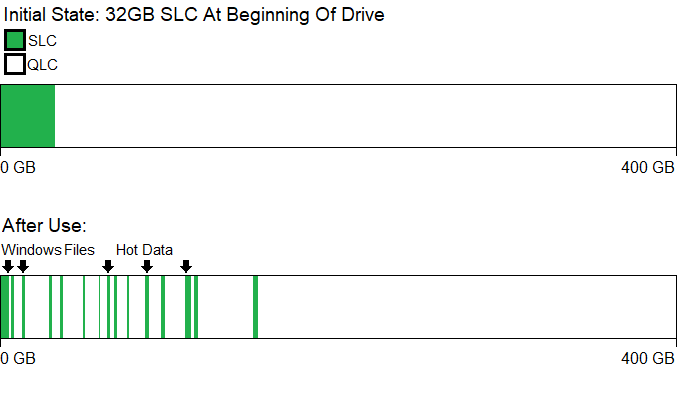 Example of how MiDrive LBA allocation will change with use
Example of how MiDrive LBA allocation will change with use
(for illustration purposes only, not based on real testing)
The SLC portion of an Enmotus MiDrive differs from a traditional SLC cache not only by being host-managed, but also in how the SSD treats it for wear leveling purposes. A typical SSD's SLC cache may have a static or dynamic size, but in either case when new write commands arrive the SSD will write the data to whatever NAND flash block is currently empty. When the cache is flushed, data from several SLC blocks will be rewritten in TLC or QLC mode to a different empty block, and the SLC blocks are then free to be erased and put back into the pool of available blocks. Managing just one pool of empty blocks means that the actual physical location of the SLC cache can move around over time, and a block that was last used as TLC might end up being used as SLC the next time data is written to it.
By contrast, Enmotus MiDrive technology has the SSD track two entirely separate pools. When the drive is manufactured, the SLC portion is permanently allocated for the lifetime of the drive. Any physical NAND pages and blocks that are used as SLC will always be treated as SLC for the lifetime of the drive, and the same for the QLC portion. The two pools of flash are subject to completely independent wear leveling, even though SLC and QLC portions will exist side by side on each physical flash chip on the drive. This means that the QLC blocks will never be subjected to the short-term Program/Erase cycles of SLC cache filling and flushing. For the SLC blocks, the error correction can be tuned specifically to SLC usage, and that allows Enmotus to achieve around 30k Program/Erase cycles for the SLC portion of the drive (based on Micron QLC NAND). MiDrives will expose separate SMART indicators for the SLC and QLC portions of the drive, so monitoring software will need to be updated to properly interpret this information.
In principle, it would be possible for either the SLC or QLC portion of the drive to be worn out prematurely, but in practice Enmotus is confident that their tiered storage management software will lead to longer overall drive lifespans than drive-managed SLC caching. Files that are known to be frequently modified will permanently reside on SLC and not be automatically flushed out to QLC during idle time. If the Enmotus software is smart enough, it will also be able to determine which files should skip the SLC and go straight to QLC until it becomes clear that a file is frequently accessed. For example, a file download coming into the machine over gigabit Ethernet will not initially need SLC performance because raw QLC can generally handle sequential writes at that speed (especially with no background SLC cache flushing to slow things down). And if that file is a movie which is infrequently accessed and only read sequentially, there's no reason for it to ever be promoted up to SLC. In general, the tiered storage management done by Enmotus should result in less data movement between SLC and QLC, rather than the increased write amplification that traditional SLC caching causes.
Since the SLC portion of an Enmotus MiDrive is a slice carved out of regular QLC NAND, it cannot offer all the benefits of specialized low-latency SLC NAND like Samsung's Z-NAND or Kioxia/Toshiba XL-Flash. The SLC portion of a MiDrive won't be appreciably faster than the SLC cache of a traditional consumer SSD, but that performance will be more consistent and predictable when working with files that are kept entirely on the SLC portion of the drive.
The Business Model
Enmotus MiDrive is currently implemented as a combination of Windows driver software and custom SSD firmware for Phison NVMe controllers, but it does not require any custom hardware. This means that any vendor currently selling Phison E12 NVMe SSDs can make a MiDrive-based product by licensing and shipping Enmotus firmware. PC OEMs can adopt MiDrives by switching to drives with Enmotus firmware and ensuring that they either include the Enmotus drivers in their Windows images, or relying on them to be distributed through Windows Update. No motherboard firmware or hardware modifications are required, or any changes to the process of provisioning a machine and preparing it for delivery to the end user. Enmotus is engaging both with PC OEMs and vendors of retail SSDs, so we can expect pre-built systems with Enmotus MiDrive technology and and upgrade options usable on any Windows 10 PC that already supports standard M.2 NVMe SSDs. Enmotus is optimistic about uptake from PC OEMs, expecting MiDrive to get a much better reception than Intel's Optane H10 did.
The basic MiDrive products will be fully automatic, with the Enmotus driver pre-installed or installed automatically when a MiDrive is detected. Data placement decisions will be completely behind-the-scenes. For enthusiasts, there will also be a premium tier similar to their current FuzeDrive software, which includes Windows Explorer shell integration so that individual files can be manually promoted or demoted, either permanently or for a limited period of time. Enmotus will also be providing a drive health monitoring tool that will include their estimate for how much extra drive lifetime has been won by using their tiering instead of ordinary SLC caching.
Enmotus expects SSDs with MiDrive technology to mostly use either 32GB or 64GB SLC portions and offer total capacities from about 400GB up to around 2TB, but the exact configurations will be determined by what their partners want to bring to market. Enmotus is also planning enthusiast-oriented solutions supporting RAID-0 style striping across multiple physical drives, and solutions for single-package BGA SSDs that go into small form factor and embedded devices.
Enmotus MiDrive technology will add to the price of SSDs, but since we're talking about QLC storage that's only relative to the cheapest NVMe SSDs available, and the final sticker prices will still be competitive for consumer SSDs. In return for that, users should get better real-world performance and enough effective write endurance to justify a 5-year warranty. We're looking forward to testing out this technology later this year, even though it will further complicate our benchmarking process. Enmotus is already sampling to interested OEMs.
More...
-
01-30-20, 11:30 AM #10289
Anandtech: Samsung Galaxy Book S Laptop with Snapdragon 8cx: Pre-Order at $999 from T
Update 1/30/2020: The Samsung Galaxy Book S with Snapdragon 8cx is now available for pre-order, starting at $999. The device is set to be available from February 13th.
Samsung has introduced its new always-connected PC based on Qualcomm’s Snapdragon platform and featuring Microsoft’s Windows 10 OS. This time around the company went with the Snapdragon 8cx SoC, a clamshell form-factor, and a 13.3-inch display, emphasizing that its Arm-powered computers compete against mainstream x86-based laptops in terms of performance and capabilities. Like other Snapdragon-based Windows machines, Samsung is aiming for long battery lifetimes here, with the new Galaxy Book S rated to work for up to 23 hours on a single charge.
The Samsung Galaxy Book S is equipped with a 13.3-inch Full-HD LCD featuring a 10-point multi touch system and a 16:9 aspect ratio. By contrast, last year’s Galaxy Book2 used a 12-inch Super AMOLED display featuring a 2160×1440 resolution and a 3:2 aspect ratio. Unlike last year’s mobile PC, the new one is a laptop, not a convertible, so it cannot be used as a tablet. Considering that we are talking about an aluminum machine with a 13.3-inch display that weighs 0.96 kilograms, the clamshell form-factor makes more sense for mainstream users. Furthermore, the overall construction looks very solid.
The new Galaxy Book S laptop is expected to be considerably faster than its predecessor as it is based on Qualcomm’s Snapdragon 8cx processor with eight general purpose cores (four Cortex-A76 and four Cortex-A55-class cores), a 10 MB L3 cache, the Adreno 680 GPU, and an eight-channel LPDDR4X-4266 memory controller. The SoC is accompanied by 8 GB of RAM as well as 256 GB or 512 GB of NAND flash storage (expandable with a microSD card).
When it comes to wireless connectivity, the Samsung Galaxy Book S includes Snapdragon X20 LTE modem (Cat 18, 5CA, 4x4 MIMO, depending on the market and operator), 802.11ac Wi-Fi, and Bluetooth 5.0. The PC’s wired connectivity department is limited to USB Type-C that is used for data and charging, a microSD card slot, yet we do not know whether it has a 3.5-mm audio connector.
As far as imaging and multimedia capabilities are concerned, the Galaxy Book S has a 720p webcam, a built-in microphone as well as Dolby Atmos-badged stereo speakers co-designed with AKG. The laptop also has a Windows Hello-compatible fingerprint reader.
Apart from performance, one of the key improvements of the Galaxy Book S compared to its predecessor is its longer battery life. The PC comes with a 42 Wh battery that enables it to work for up to 23 hours (based on tests conducted by Samsung), up from 20 hours for last year's device.
Related Reading:Specifications of the Galaxy Book S General Specifications Display 13.3-inch,
1920×1080
165 PPICPU Qualcomm Snapdragon 8cx
4 x Kryo 495 Gold at 2.84 GHz4 x Kryo 495 Silver at 1.8 GHz
10 MB L3Graphics Adreno 680 GB RAM 8 GB LPDDR4X Storage 256 - 512 GB Wi-Fi 802.11ac Wi-Fi Bluetooth 5.2 WWAN Qualcomm X20 Gigabit LTE
Cat 18, 5CA, 4x4 MIMO, up to 1.2 Gbps DL, up to 150 Mbps ULUSB 3.0 ? × Type-CWebcam 720P Other I/O Microphone, stereo speakers, trackpad, MicroSD card reader, etc. Battery 42 Wh Battery Life 23 hours Dimensions Width 305.2 mm Height 203.2 mm Thickness 6.2 - 11.8 mm Weight 960 grams Price $999
- Samsung Unveils Galaxy Book2: 12-Inch, Snapdragon 850 with X20 LTE, 20 Hrs
- Hands-On with Industry’s First 5G Laptop: A Lenovo with Qualcomm’s 8cx SoC and X55 Modem
- Qualcomm Tech Summit, Day 3: Snapdragon 8cx, the New ACPC SoC
- Spotted: Qualcomm Snapdragon 8cx Wafer on 7nm
- Lenovo Announces Yoga C630: The First Windows on Snapdragon 850
- Huawei Readies Windows 10 Laptop Based on Qualcomm Snapdragon 850
Source: Samsung
More...
-
01-30-20, 01:44 PM #10290
Anandtech: EnGenius Reveals ‘Affordable’ Multi-Gig Switches with PoE: 8 2.5GBASE-T an
EnGenius has unveiled a new series multi-gigabit PoE++L2+ networking switches with multiple NBASE-T ports. The EnGenius ECS2512FP and ECS2512 switches are designed for small and medium businesses as well as large living environments, and along with their fast switching capabiltiies, one of the models is also capable of Power over Ethernet to deliver power to remote, high-performance devices like Wi-Fi 6 access points. Both models can be managed remotely using EnGenius cloud-based software. The manufacturer is calling its new switches ‘affordable’, though without listing official prices.
Both new switches from EnGenius — the ECS2512FP and the ECS2512 — support 120 Gbps of switching capacity and are fed via eight 2.5GBASE-T ports along with four 10GbE SFP+ slots for fiber uplinks. Meanwhile, the more advanced ECS2512FP model supports the IEEE 802.3bt Power-over-Ethernet, allowing it to transfer up to 240 W of power to such power-hungry devices as Wi-Fi 6 access points, PTZ cameras, or AV controllers.
One of the key features of the latest EnGenius switches is their support for the company’s subscription-free EnGenius Cloud that allows to monitor system metrics in real time, display network topology, troubleshoot, problems, and analyze network’s behavior. According to the company, its switches and cloud services provide ‘enterprise-class features’ and essentially simplify monitoring of networks. While such capabilities bring a lot of value for companies, they come at a cost that typically makes these kinds of multi-gig switches prohibitively expensive for consumers.
EnGenius says that its ECS2512FP and ECS2512 switches will hit the market next month and that they will be ‘affordable’. Unfortunately, without an actual price it is impossible to say whether the switches will be reasonably priced for an average person, or for a business that wants to save on multi-gig network management.
Related Reading:
- Intel Quietly Mentions 2.5 GbE Ethernet Controllers
- QNAP Launches QNA-UC5G1T: A USB 3.0 to 5 GbE Network Adapter
- Club 3D Launches 2.5 GbE USB Type-A & USB Type-C Dongles
- Buffalo Unveils New 10GBase-T Network Card with 2.5G+5G
- Netgear at CES 2018: Nighthawk Gaming Router, N-BASET Switch, and More
- Aquantia Launch AQtion 5G/2.5G/1G Multi-Gigabit Ethernet Cards (NICs) for PCIe
Source: EnGenius
More...
Thread Information
Users Browsing this Thread
There are currently 24 users browsing this thread. (0 members and 24 guests)




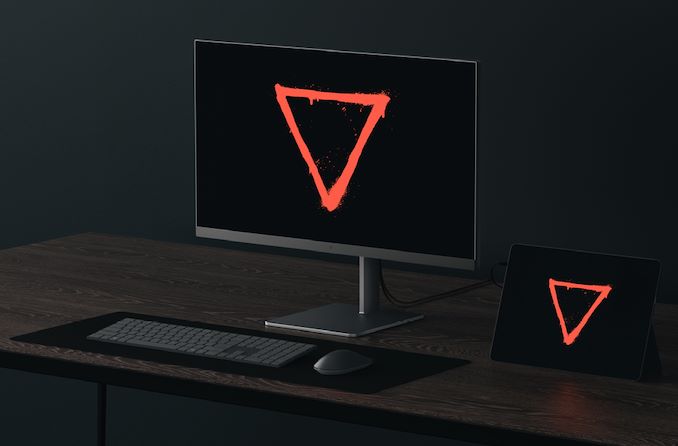
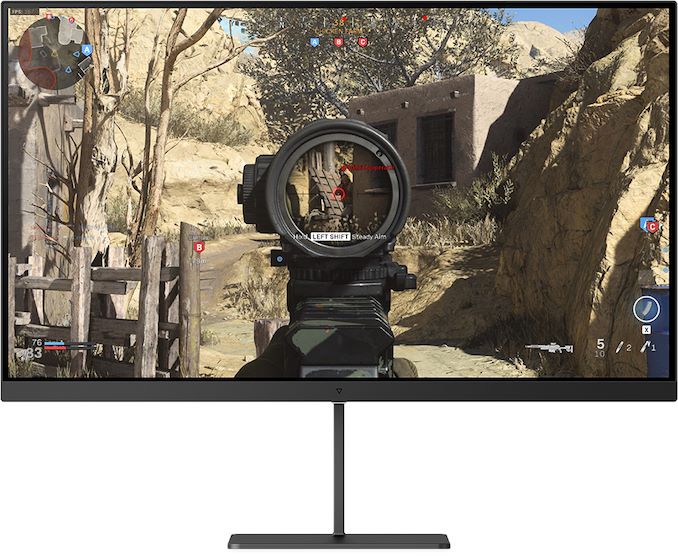


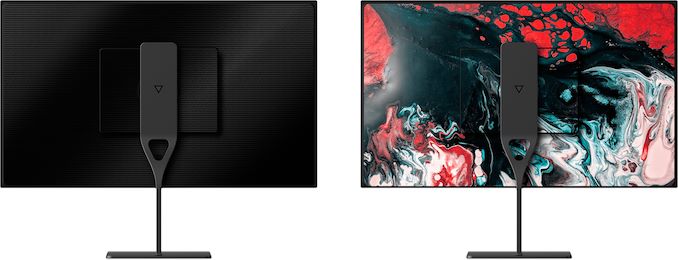

 Quote
Quote
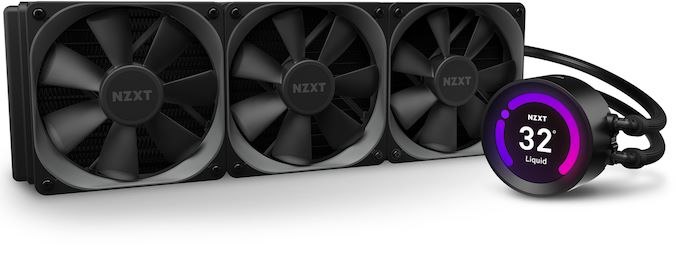
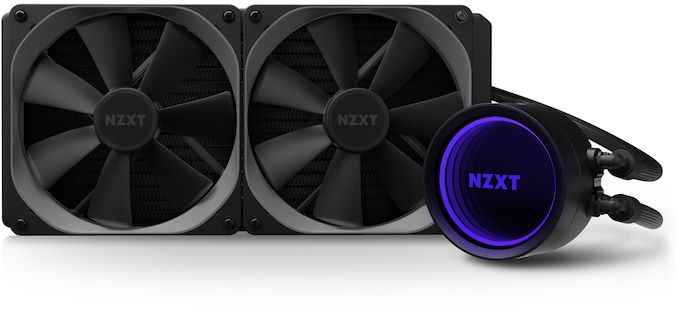
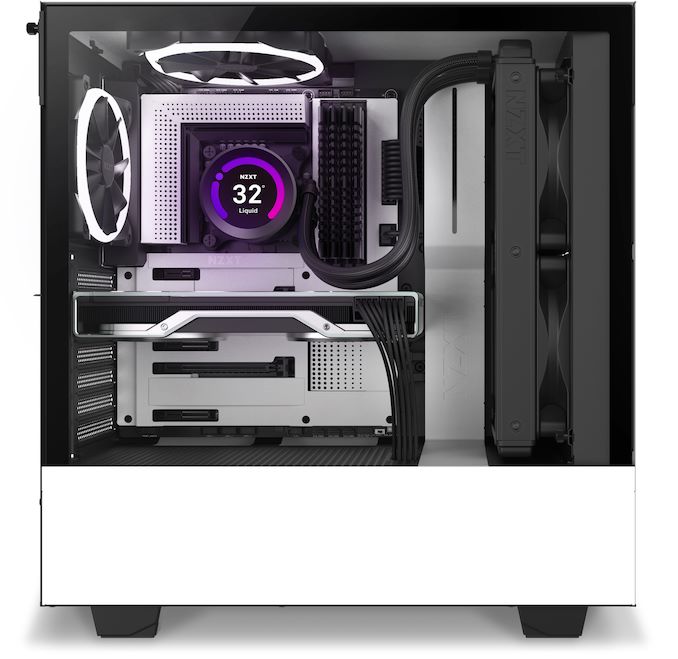
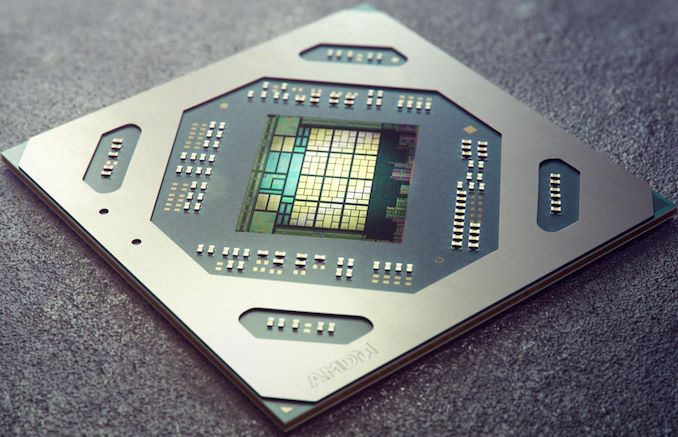
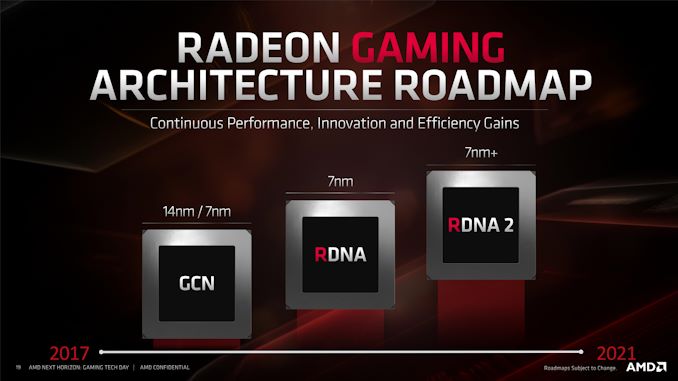
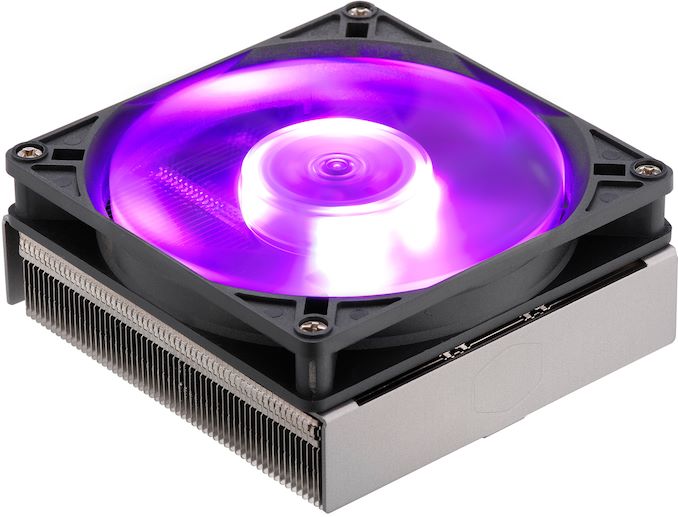
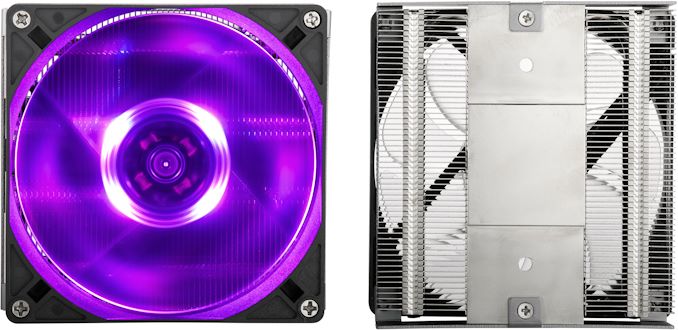
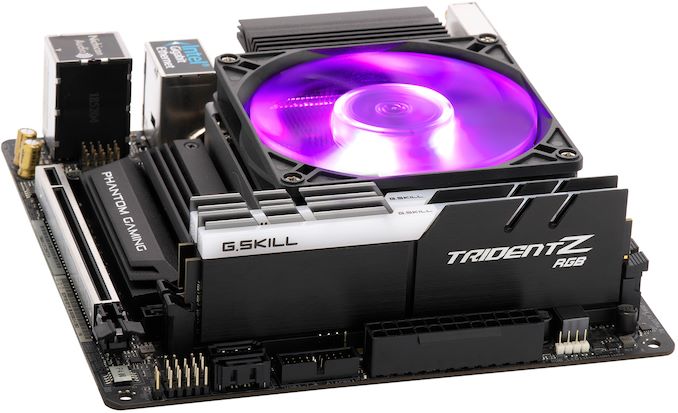
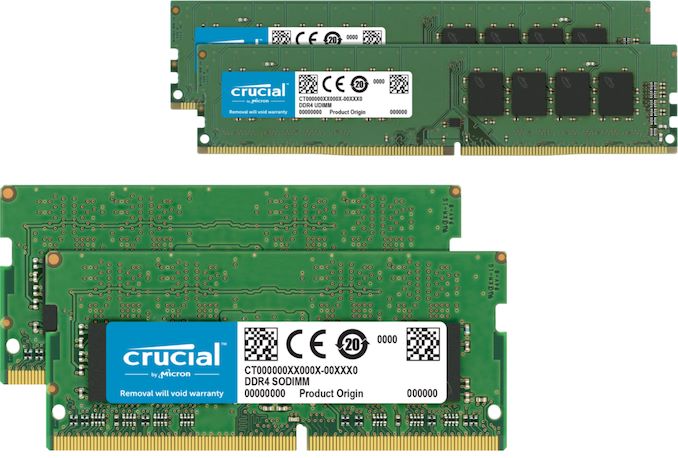


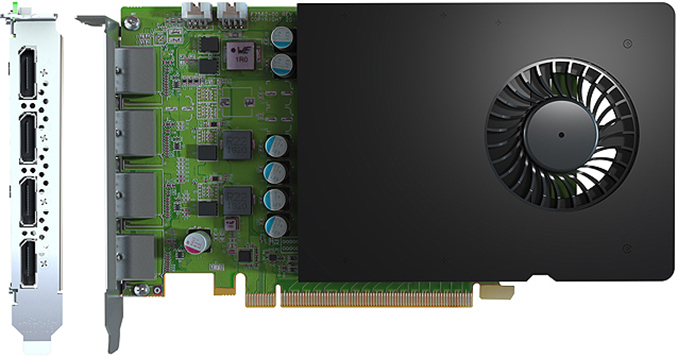
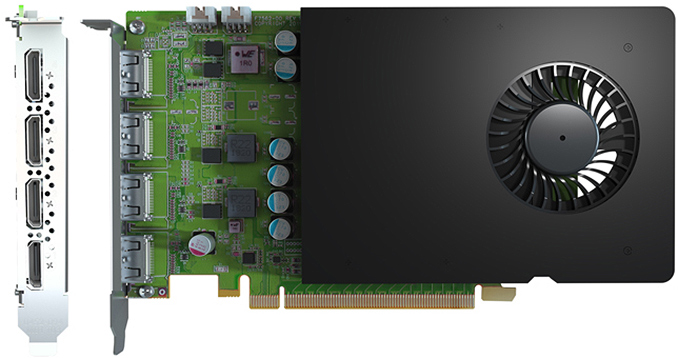
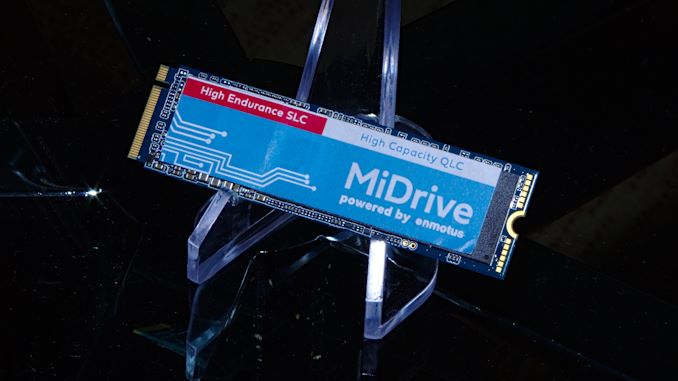
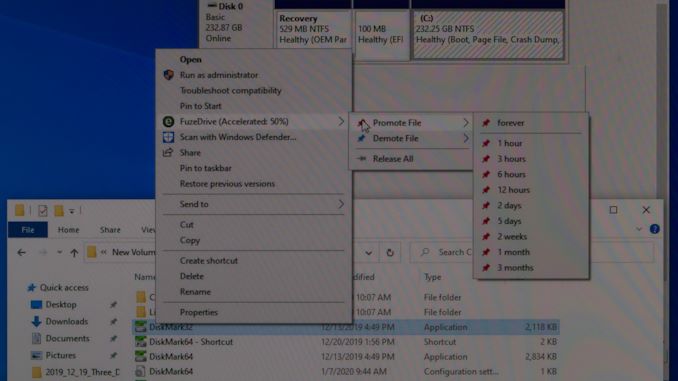


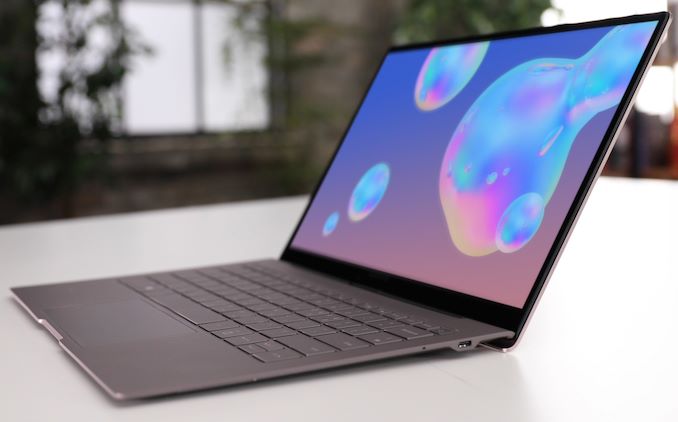



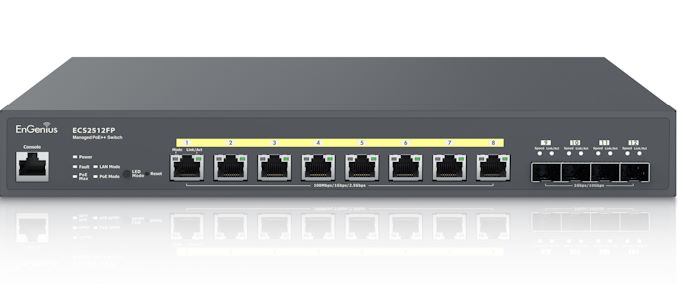

















Bookmarks